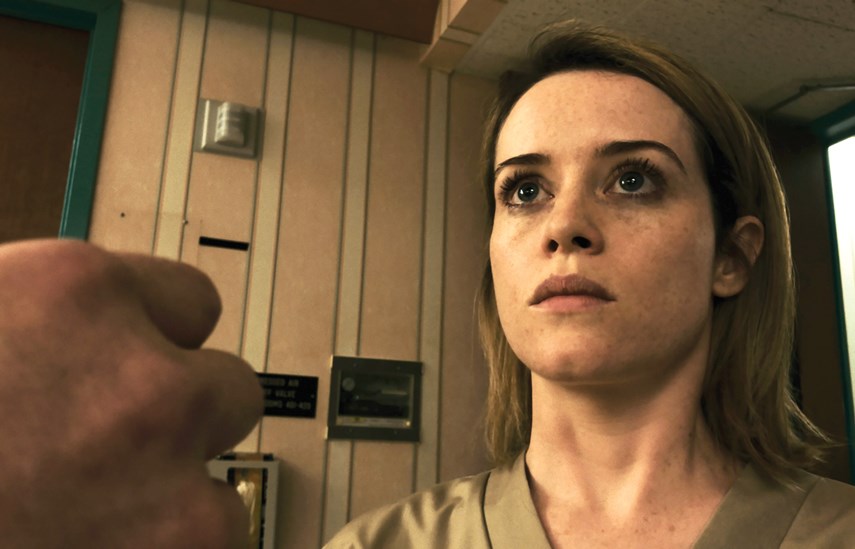Unsane. Directed by Steven Soderbergh. Starring Claire Foy and Joshua Leonard. Rating: 7 (out of 10).
Unsane feels much like the continuation of another movie, one in which the bad guy is vanquished and the heroine is left in the back of the ambulance to begin picking up the pieces.
But what if the perpetrator didn’t go away?
We meet Sawyer (Claire Foy) after two years of trauma, and soon after moving from Boston to Pennsylvania to try and escape the man who has been stalking her. She puts in time at work and endures a leering boss. She eschews real relationships for the wham-bam Tinder variety, but these are also dangerously fraught. Facetime conversations with her concerned mom (Amy Irving) help, but Sawyer isn’t coping.
With understandably raw sex- and trust-related issues, she seeks help through Highland Creek Behavioral Center, who promptly deem Sawyer a harm to herself and others, and commit her to their facility for a 24-hour period.
The 24 hours stretches into a week. Violet (Juno Temple, that magical hair disguised by cornrows) violently asserts her place in the pecking order, while recovering opioid addict Nate (Jay Pharoah) makes a convincing case for the fact that the hospitals and insurance companies are in cahoots, making a killing off of people who shouldn’t really be there.
But it’s the appearance of her stalker David (Joshua Leonard), incarnated as new male nurse George, that truly terrifies her. The more Sawyer tries to be heard, the more she’s labeled a hysteric and fed more meds.
She’s a sane person fighting against a corrupt system. Or is she delusional?
Unsane presents an unnerving premise to which we can all relate: it’s a dental-floss thin line between sane and crazy after all, and we all fear being regarded as on the wrong side.
It hearkens back to when sane people – unwed mothers, alcoholics, the so-called deviant and promiscuous – were housed with truly ill patients.
It speaks to the current mistrust of bloated medical insurance corporations. And it definitely draws parallels to the whistleblowers of the #MeToo movement, women whose protestations of abuse and peril fell on deaf ears.
Prolific director Steven Soderbergh – of the Oceans films, Magic Mike hits, Oscar winners (Traffic) and contenders (Erin Brokovich, Sex Lies and Videotape) – announced his retirement a few years back, announcing that “movies don’t matter anymore.”
He focused instead on television with The Knick, Behind the Candelabra and Mosaic before bursting back in force last year with the under-appreciated Logan Lucky.
The script by James Greer and Jonathan Bernstein falls apart in the final third: best to just sit back and enjoy the breathless finale rather than think too hard. Another misstep: a surprise A-list cameo feels jarring and indulgent.
The casting of Foy saves the film. As someone late to the party who recently binge-watched The Crown, I watched in wonder as the actress fought, scratched, and offered sexual favours as trade. (Surely the monarch doesn’t drop f-bombs this effortlessly!)
She’s not warm and fuzzy, our Sawyer, and Foy doesn’t shy away from the pricklier aspects of her character. Foy’s American accent sometimes feels like it’s pulled from the Kennedy era, but her conviction and intensity rule the film, even when things get silly.
Soderbergh was no doubt inspired by Sean Baker’s 2015 film Tangerine, shot entirely on iPhone.
A liberating experience and a technical challenge for the director, I’m sure. It’s a well-shot film for an iPhone film, the muddy, grainy sensation speaks well to Sawyer’s delusions. But I’m hoping it isn’t the start of a trend (as, I’m sure, are horrified cinematographers everywhere).
“The chances of this happening to you are quite plausible,” Soderbergh says in the film’s production notes. With a statement that scary, who needs the movies?



